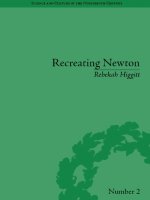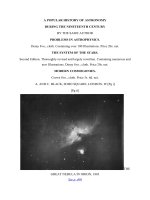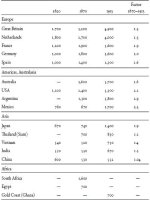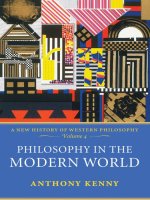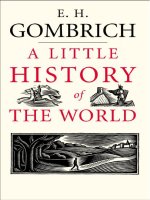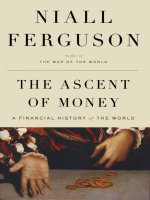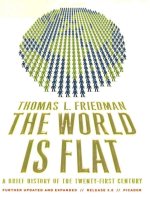A world history of nineteenth century archaeology nationalism, colonialism, and the past
Bạn đang xem bản rút gọn của tài liệu. Xem và tải ngay bản đầy đủ của tài liệu tại đây (2.72 MB, 501 trang )
Tai Lieu Chat Luong
OXFORD STUDIES IN THE HISTORY OF ARCHAEOLOGY
Editorial Board
BETTINA ARNOLD
MICHAEL DIETLER
STEPHEN DYSON
PETER ROWLEY-CONWY
HOWARD WILLIAMS
OXFORD STUDIES IN THE HISTORY OF ARCHAEOLOGY consists of
scholarly works focusing on the history of archaeology throughout the
world. The series covers the development of prehistoric, classical, colonial,
and early historic archaeologies up to the present day. The studies, although
researched at the highest level, are written in an accessible style and will
interest a broad readership.
A World History of
Nineteenth-Century
Archaeology
Nationalism, Colonialism, and the Past
M A RG A R I TA DI´ A Z - A N D R E U
1
3
Great Clarendon Street, Oxford ox2 6dp
Oxford University Press is a department of the University of Oxford.
It furthers the University’s objective of excellence in research, scholarship,
and education by publishing worldwide in
Oxford New York
Auckland Cape Town Dar es Salaam Hong Kong Karachi
Kuala Lumpur Madrid Melbourne Mexico City Nairobi
New Delhi Shanghai Taipei Toronto
With oYces in
Argentina Austria Brazil Chile Czech Republic France Greece
Guatemala Hungary Italy Japan Poland Portugal Singapore
South Korea Switzerland Thailand Turkey Ukraine Vietnam
Oxford is a registered trade mark of Oxford University Press
in the UK and in certain other countries
Published in the United States
by Oxford University Press Inc., New York
ß Margarita Dı´az-Andreu 2007
The moral rights of the author have been asserted
Database right Oxford University Press (maker)
First published 2007
All rights reserved. No part of this publication may be reproduced,
stored in a retrieval system, or transmitted, in any form or by any means,
without the prior permission in writing of Oxford University Press,
or as expressly permitted by law, or under terms agreed with the appropriate
reprographics rights organization. Enquiries concerning reproduction
outside the scope of the above should be sent to the Rights Department,
Oxford University Press, at the address above
You must not circulate this book in any other binding or cover
and you must impose the same condition on any acquirer
British Library Cataloguing in Publication Data
Data available
Library of Congress Cataloging-in-Publication Data
Data available
Typeset by SPI Publisher Services, Pondicherry, India
Printed in Great Britain
on acid-free paper by
Biddles Ltd., King’s Lynn, Norfolk
ISBN 978–0–19–921717–5
1 3 5 7 9 10 8 6 4 2
To my husband, Angel, and my daughter Anna
This page intentionally left blank
Preface
In 1999, while organizing a one-day conference on ‘Nationalism and Archaeology’ held in the London School of Economics, I was encouraged by the
well-known scholar of nationalism, the sociologist Anthony Smith, to write
an overview. By then I was not new to the subject. Over the years I had been
contributing to the lively debate over the value of understanding the political
context for the development of archaeology. This contested the previously
dominant internalist perspective on the history of archaeology, which focused
on the progress of archaeological thought while taking little, if any, account
of the socio-political and economic framework in which it was formulated.
As part of the debate, I edited books on nationalism (Dı´az-Andreu &
Champion 1996b; Dı´az-Andreu & Smith 2001), and women in academia
(Dı´az-Andreu & Sørensen 1998b), as well as producing work more narrowly
related to the archaeology of particular countries, Spain and, to a lesser
extent, Britain.
Throughout the 1999 conference it became obvious how uneven our
understanding of developments in archaeology beyond Europe was. It was
unclear how imperialism and colonialism had aVected archaeological practice
in the colonies, as well as in parts of the world which resisted colonialism such
as China and Japan. Also, studies on the growth of professional archaeology as
a hegemonic discourse had not been matched by an examination of whether
this had been contested by a minority of archaeologists themselves and by the
general public, and whether there had been alternative accounts. Such studies
had also focused on a narrow period starting in the late nineteenth century,
but the literature on the impact on archaeology of the rise of nationalism in
the late eighteenth and early nineteenth centuries, a topic explored by a
handful of history of art scholars, was practically ignored by archaeologists.
The organization of a joint conference between archaeologists and sociologists also highlighted the potential for archaeology to proWt from insights
formulated in other social sciences, such as history, sociology, history of art,
the history of science, and literary studies.
I have been working on topics related to the subject of this book for more
than a decade and on the manuscript itself for seven years. This has required
me to undertake an extremely wide reading and I have needed time to reXect
upon previously undetected connections between diVerent parts of the globe.
This does not mean that everybody who worked in archaeology anywhere in
the world is mentioned here. This would not only be impossible, but also
viii
Preface
belong to a diVerent sort of undertaking. My initial aim was to include in this
book the nineteenth and the twentieth centuries, but I subsequently realized
that I could not cover all the issues in a single volume. However, chapters
relating to twentieth-century archaeology have already been written and will
hopefully form part of a future volume that will most probably take a fair deal
of eVort to complete. This is a work of synthesis. Nevertheless, it is a more indepth study than initially intended. To a considerable extent the research
conducted for this project is based on three major types of readings. In the
Wrst place, I have explored a narrow selection of contemporaneous writings by
antiquarians, archaeologists, and other scientists and thinkers. Secondly, this
work has greatly beneWted from analyses of the history of science carried out
by anthropologists, historians, and philologists. Finally and most importantly,
I have drawn on many studies on the history of archaeology in several
languages, including English, German (to the extent that my knowledge of
the language has allowed me), and several Romance tongues (French, Italian,
and Spanish), which have helped my work tremendously and of which the
bibliography at the end of the book is, I hope, good reXection. Nonetheless,
I cannot pretend to have covered the entire literature of the subject. I am
constrained by my limited mastery of most of the world’s languages, in which
a lot of interesting information is no doubt to be found.
While I alone am responsible for what has been written, I would like to
acknowledge the great debt I owe to institutions and colleagues for providing
essential support. A small—but extremely helpful—dean’s fund in the summer of 2004 made it easier for me to use the British Library to access
information diYcult to obtain otherwise. An invaluable grant from the
AHRC allowed me extra time for research during October to December
2004, in addition to the two sabbatical terms provided by the university. This
made it possible for me to have a good, Wrst draft of the volume ready by the
time I returned to my teaching commitments. The research committee in my
department also provided me with Wnancial help to pay for the editing of the
English of the original text and later helped to alleviate my administrative
commitments at the time when the volume had to be revised in light of
the readers’ comments in summer 2006. As a non-native English speaker,
for the successful completion of the project a team of English editors was
needed: I am most grateful to Anwen CaVell, Gary Campbell, Jaime
Jennings, Anne O’Connor, Megan Price, Kate Sharpe, and Angel Smith.
I am also indebted to the large number of people who, over many years,
have assisted with the writing of this project. My greatest debt is to Suzanne
Marchand and to two other anonymous readers for Oxford University Press,
who oVered insightful critiques of my manuscript. My response to their
many comments has greatly improved the quality of the book. The following
Preface
ix
scholars suggested ideas and shared information after having read one or
more chapters: Nadia Erzini, Anna Leone, and Stephen Vernoit for North
African archaeology, Daniel Scha´velzon for Latin America, Jarl Nordbladh
for early nineteenth-century European archaeology, Rasmi Shoocongdej for
Siam (Thailand), Neil Silberman for the archaeology of the biblical lands,
Gina Barnes and Lothar von Falkenhausen for East Asia, Daniel Saunders for
the Russian Empire, Charles Higham for Southeast Asia and Dilip Chakrabarti and Sudeshna Guha for India. Many others have been ready to answer
speciWc questions and provided me with interesting ideas. In alphabetical
order, these are Lois Armada, Marcello Barbanera, Tim Bayliss-Smith, Gary
Campbell, Haydon L. Cherry, B. F. Cook, Per Cornell, Jordi Cortadella, Noeăl
Coye, Chris Evans, Lothar von Falkenhausen, Vı´ctor Ferna´ndez, Lucio
Menezes Ferreira, Pedro Paulo Funari, Brien K. Garnand, Norman Girardot,
Chris Heaton, Christine Hertler, Caroline Humphreys, Jørgen Jensen, Matthew
Johnson, Lise Bender Jorgensen, Anessa Kassam, Lars Larsson, Jose´ Ramo´n
Lo´pez Rodrı´guez, Peter Manuelian, Suzanne Marchand, Jaume Masso´, Aron
Mazel, Chris Miele, Ignacio Montero, Gloria Mora, Oscar Moro, Tim Murray,
Aleksandr Naymark, Elisabeth Nordbladh, Anne O’Connor, Ayse Ozdemir,
David W. Phillipson, Peter Rowley-Conwy, Laurajane Smith, Pamela Jane
Smith, Ulrike Sommer, Marie Louis Stig Sørensen, Ruth Struwe, Igor L.Tikhonov, Mogens Trolle Larsen, Luis Va´zquez Leo´n, Guus Veenendaal, Stephen
Vernoit, Ha˚kan Wahlquist, Hartmut Walravens, Stine Wiell, Penny Wilson,
and Oliver Zimmer. This book owes an intellectual debt to many people in
Spain (for the whole list see Dı´az-Andreu 2002: 11–13), to Bruce Trigger’s
work, which has made history of archaeology an acceptable enterprise in the
eyes of my colleagues and to the members of the AREA (Archives of European
Archaeology) project. This volume should be seen as contributing to the
project’s goals. I would like to express my sincere thanks to all those mentioned
above for their encouragement. Last, but not least, thanks to Durham library,
and especially to John Lumsden, Kate Page, Caro Baker, and Heather Medcalf,
for having searched and made available a wide range of publications which
have greatly enriched this work.
Portions of Chapter 1 were published in the introductory chapter of the
volume edited with Anthony D. Smith on Nationalism and Archaeology in the
journal Nations and Nationalism 7.4. Ideas subsequently included in Chapter 2
were Wrst part of a lecture tour of Brazil in 1999 when, thanks to Professor
Pedro Funari, I was invited by the FAPESP (the Science Foundation of the
State of Sa˜o Paulo in Brazil) to teach in the universities of Campinas, Joinville
and Sa˜o Paulo. The core of Chapters 4, 7, and 10 was initially drafted during a
lecture tour in Mexico (Mexico City, Xalapa, and Me´rida), organized by
Enrique Florescano and Alain Schnapp in December 1997, and other ideas
x
Preface
in these chapters much later discussed in the conference Informal Empire?
held in Bristol in January 2007. In addition, sections of Chapters 5 and 8 were
delivered at the conference British Island Stories: History, Identity and Nationhood organized in 2002 and published in 2004.
Finally, my greatest thanks to my family—my husband Angel and my
daughter Anna. This book is dedicated to them.
Contents
List of Abbreviations
List of Maps
1. An Alternative Account of the History of Archaeology in the
Nineteenth Century
xiii
xiv
1
PART I. THE EARLY ARCHAEOLOGY OF THE
GREAT CIVILIZATIONS
2. Antiquities and Political Prestige in the Early Modern Era
3. The Archaeology of the French Revolution
4. Archaeology and the 1820 Liberal Revolution: The Past in
the Independence of Greece and Latin American Nations
29
60
79
PART II. THE ARCHAEOLOGY OF INFORMAL
IMPERIALISM
5. Informal Imperialism in Europe and the Ottoman Empire:
The Consolidation of the Mythical Roots of the West
6. Biblical Archaeology
7. Informal Imperialism beyond Europe: The Archaeology
of the Great Civilizations in Latin America, China, and Japan
99
131
167
PART III. COLONIAL ARCHAEOLOGY
8. Colonialism and Monumental Archaeology in South and
Southeast Asia
9. Classical versus Islamic Antiquities in Colonial Archaeology:
The Russian Empire and French North Africa
10. Colonialism and the Archaeology of the Primitive
209
245
278
PART IV. NATIONAL ARCHAEOLOGY IN EUROPE
11. The Early Search for a National Past in Europe (1789–1820)
317
xii
Contents
12. Archaeology and the Liberal Revolutions (c. 1820–1860):
Nation, Race, and Language in the Study of Europe’s Past
13. Evolutionism and Positivism (c. 1860–1900)
14. Conclusions
338
368
398
Maps
References
Index
409
414
461
List of Abbreviations
ASI
Archaeological Survey of India
bce
Before contemporary era
ce
Contemporary era
CIAPP
International Congress of Prehistoric Anthropology and Archaeology
(Congre`s International d’anthropologie et d’arche´ologie pre´historique)
HMW
IHGE
Hollandsche Maatschappij der Wetenshappen
Instituto Histo´rico, Geogra´Wco e Etnogra´Wco Brasileiro (Historic,
Geographic and Ethnographic Institute of Brazil)
n.d.
no date
PEF
Palestine Exploration Fund
r.
rule
RGK
Roămisch-Germanische Kommission
RLK
Reichslimeskommision
US
United States of America
VOC
Verenigde Oostindische Compagnie (Dutch East India Company)
List of Maps
1.
2.
3.
4.
5.
Nineteenth-century America (based on Barraclough 1992: 101)
The Silk Road (based on Whitfield 2004: 6–7)
Nineteenth-century Southeast Asia (based on Dixon 1991: map 1.1)
The Russian Empire (based on Moore 1981: 70)
Map of Europe in 1861 (based on The Times Atlas 1994:
156–7). The grey line encloses the German confederation
409
410
411
412
413
1
An Alternative Account of the History
of Archaeology in the Nineteenth Century
THE MULTIVOCALITY OF ARCHAEOLOGY AS A CHALLENGE
TO W R IT I N G TH E H I S TO RY OF T H E D IS C IP L I N E
Historians of science (whether philosophers, epistemologists, historians of
science, or sociologists of science) have been stubbornly reluctant to deal with
archaeology in favour of other disciplines such as geology and medicine.1
Most histories of archaeology have, therefore, been written by archaeologists
and this book is no exception. Being trained in the subtleties of stratigraphy
and typology does not, however, provide archaeologists with the necessary
tools to confront the history of their own discipline. Many of the histories of
archaeology so far written revolve around a narrow, almost positivistic,
understanding of what the writing of one’s own disciplinary history represents. This volume attempts to overcome these limitations. Questions addressed have been inspired by a wide range of authors working in the areas of
history, sociology, literary studies, anthropology, and the history of science. It
uses the case of nineteenth-century world archaeology to explore the potential
of new directions in the study of nationalism for our understanding of the
history of archaeology. Key concepts and questions from which this study has
drawn include the changing nature of national history as seen by historians
(Berger et al. 1999b; Hobsbawm 1990) and by scholars working in the
areas of literature and political studies (Anderson 1991); transformations
within nationalism (Smith 1995); new theoretical perspectives developed
within colonial and post-colonial studies (Asad 1973; Said 1978); the relationship between knowledge and power (Foucault 1972 (2002); 1980b); and
1 Among historians of science there are a few exceptions: Michael Hammond, Henrika
Kuklick, Marc-Antoine Kaeser, and Wiktor Stoczkowski. They were originally trained as archaeologists but took doctorates in the history of science. Historians have also been reluctant to deal
with the history of archaeology, but their number is larger, among others Noeăl Coye, Nathalie
Richard (both also originally trained as archaeologists), Raf de Bont, Martijn EickhoV, Philippa
Levine, Gonzalo Pasamar, Ignacio Peiro´, Suzanne Marchand, and Rosemary Sweet.
2
Archaeology in the Nineteenth Century
the consideration of social disciplines as products of history (Bourdieu 1993;
2000; 2004).
Perhaps historians and sociologists of science’s lack of enthusiasm to
engage with archaeology derives from its sheer lack of homogeneity. The
term comes from the Greek arkhaiologia, the study of what is ancient. It
most commonly encompasses the analysis of archaeological remains, but the
emphasis on what body of data lies within its remit has always diVered—and
still does—from country to country and within a country between groups of
scholars of the various academic traditions. For some it revolves around the
study of artistic objects, as well as of ancient inscriptions and coins, for others
it encompasses all manifestations of culture from every period of human
existence. In many parts of the world the teaching of archaeology is tightly
bound up with anthropology, in others with history, still in others with
geology. University departments in which archaeologists of all sorts of specializations have been put under the same roof are mainly restricted to the
English-speaking world, and they are the result of a development that timidly
started around the First World War, but diVerences still remain (see, for
example, the contrast between the meetings of the Society for American
Archaeology and the American Institute of Archaeology). In most countries
medieval archaeology is only taught in departments of history or the history
of art, and classical archaeology in those teaching classics and ancient history.
The study of the material remains of the past has also attracted historians,
philologists, historians of art, architects, doctors, botanists, geologists, palaeontologists, anthropologists, clerics, and members of many other professions.
A certain homogeneity has only appeared in the last few years under the
umbrella of public archaeology, which seems to have similar objectives everywhere in the world.
This diversity is certainly not new. In the eighteenth century, a distinction
was drawn between historians, who focused on rhetoric and grand narratives,
and antiquarians. Although both admired and made use of classical antiquity
as one of their main sources, the antiquarians believed that antiquities could
provide new information not contained in the texts written by the classical
authors (Sweet 2004: 3). Further subdivisions appeared in the 1870s and
1880s, when archaeologists became separated from antiquarians. The term
archaeologist came ‘to signify the trained and respected professional’ as
opposed to that of antiquarian (Levine 1986: 36, 39, 89). Referring to the
nineteenth century, Alain Schnapp (1991) distinguishes between philological
archaeology and natural archaeology. The Wrst type had emerged from
Winckelmann’s work on Greek and Roman sculpture and comprised all of
those who studied the monuments of classical antiquity assisted by data from
written documents. The second was based on typology and was closer to
An Alternative Account
3
geology and anthropology, and they mainly focused their studies in the
prehistoric period. The need for training to qualify as a professional, however,
would radically change the meaning of archaeology from the late nineteenth
century.
The multivocality of the meaning of archaeology in the present as well as in
the past makes the attempt to write a history of archaeology a challenge. There
are many possible histories of archaeology, as many as understandings of what
archaeology is. In this book the widest possible meaning has been chosen. In
fact, included in this volume are many individuals who dealt with ancient
objects but never deWned themselves as archaeologists and perhaps not even
as antiquarians. If they—and the institutions that they were associated with—
have been incorporated into the account it is because nowadays all of them
would most probably deWne themselves—or be identiWed by others—as either
professional or amateur archaeologists.2 Consciously, therefore, this history is
a teleological account of a discipline that emerged in the nineteenth century
and fully matured in the following century, or it fully developed professionally
between the two world wars, and especially after the Second World War.
Maturity does not mean coherence, for, as explained above, even today
archaeology does not have a single meaning. There are, and there were,
alternative understandings of what archaeology is and was, as well as complex
and multi-layered identities of the actors who practised and practise it.
It could be argued that the body of archaeologists who form the basis of
this volume were an imagined community of scholars, a group of individuals
who perhaps never saw each other or knew each other but imagined themselves as having common interests and were ready to behave fraternally to
other members of the community. It started as a very amorphous community
that gradually became more Wnite in its boundaries and whose members, over
time, felt increasingly legitimated by the professionalization of their pursuit.
It was a community which had elastic boundaries with other, similarly
perceived, scholarly communities (cf. Anderson 1991: 6–7). The elaboration
of its own realms of memory (cf. Nora 1996–8), as Nathalie Richard (2001)
puts it, further promoted an awareness of its existence as a group: the
handbook—or, in the nineteenth century, the catalogue—their own history
as a group, a set of anecdotes and a group of scholars with whom one could
identify, were all nineteenth-century creations.
2 Until the Wnal years before the First World War there was no sharp contrast between
professional and amateur archaeologists. In 1996 Marchand complained about what she called
the ‘manichean dichotomy between ‘‘politicized’’ pseudo-scholarship and ‘‘disinterested’’ pure
scholarship’, which, she argued, ‘has obstructed our understanding of their dialectical interdependency’ (Marchand 1996a: 155). In this book, the term amateur has been used instead of
avocational, to avoid the modern connotations of the latter concept, of recent creation.
4
Archaeology in the Nineteenth Century
NAT IO NA L I S M , I M P E R I A L I S M , A N D C O LON I A L I S M
IN ARCHAE OLOGY
In this book it is argued that archaeology is not a value-free and neutral social
science as previously presumed. I will argue, therefore, that for a correct
understanding of the history of archaeology it becomes essential to evaluate
the impact of the framework in which it developed. It is only when this is
done that a more critical and deconstructive history of archaeology becomes
possible. The perspective adopted in this volume, therefore, contrasts with
that taken in other major overviews of the history of archaeology, from
Michaelis’ early study, Die archaăologischen Entdeckungen des 19. Jahrhunderts
(A Century of Archaeological Discoveries, 1908), to Glyn Daniel’s A Hundred
Years of Archaeology (Wrst published in 1950, later published as A Hundred
and Fifty Years of Archaeology), and Gran Aymerich’s more recent Naissance
de l’Arche´ologie Moderne (The Birth of Modern Archaeology, 1998). These
syntheses focus on the internal development of the discipline, centring their
attention on the role of particular individuals in the evolution of ideas and the
progress of the discipline. They generally pay little attention to external
circumstances—the political, social and cultural context which shaped the
practice of archaeology. The exception to this is when moments of crisis are
discussed, particularly during the totalitarian regimes of National Socialist
Germany and Fascist Italy. Implicitly, the assumption is that archaeology
is normally isolated from political or social realities except sporadically,
in extreme cases, and that the consideration of external factors is not indispensable to comprehend the development of the discipline. There are authors,
however, who have adopted a more critical line, from Kristian Kristiansen
(Kristiansen 1981) to Tom Patterson (Patterson 1995b), and many recent
thinkers who will be mentioned in the pages of this book.
This volume aligns itself with the latter group of scholars and argues that
taking into consideration external factors—the socio-political context in
which archaeology developed—is key to the understanding of the processes
that underpin the changes within the discipline. In this volume archaeology is
seen as a social science, that is, a discipline that studies human aspects of the
world, often making use of quantitative and qualitative methods. Archaeology
is described as a historical and cultural product, a socially created set of
practices and body of work that cannot be isolated from the contemporary
socio-cultural and historical framework in which it is and was formed. It is
considered that the archaeological past interpreted by scholars at any particular time is mediated by their own experiences as individuals. The study
undertaken in this volume aims to dissect the changes taking place in
An Alternative Account
5
nineteenth-century archaeology by plotting them against the evolution of the
idea of the nation and the interest in the past. Connected to this were the
political practices of colonialism and imperialism, whose links with archaeology are explored later in this chapter.
Nationalism
Nationalism is a term that has been deWned in many ways. The sociologist
Ernest Gellner and the historian Eric Hobsbawm saw it as ‘primarily a
principle which holds that the political and national unit should be congruent’ (Gellner 1983: 1; Hobsbawm 1990: 9). Before them, Kedourie, in his
oft-reprinted post-war work Nationalism, had aptly deWned nationalism as a
doctrine invented in Europe at the beginning of the nineteenth century . . . BrieXy, the
doctrine holds that humanity is naturally divided into nations, that nations are known
by certain characteristics which can be ascertained, and that the only legitimate type of
government is national self-government.
(Kedourie 1993: 1).
Nationalism is distinguished from patriotism3 in that the latter only encompasses feelings of support for, loyalty to or belief in a nation, whereas the Wrst
also refers to an organized political doctrine and movement which aimed at
the political self-determination of the nation. Patriotism, also deWned by
some as proto-nationalism, was operative earlier in history, certainly during
the medieval period. Although some see nations as having existed for millennia before our era in places such as Egypt (Smith 2005), this view is not widely
held (for an update on the debate see Scales & Zimmer 2005). The argument
proposed in this book aligns itself with those who think that the nation only
became constitutive of state power and legitimacy from the late eighteenth
century onwards.
Nationalism is a complex and diverse ideology that can be subjected to a
variety of typologies. One of them is the distinction made by many experts
between civic or political nationalism and cultural or ethnic nationalism. In
the Wrst case, the concept of the nation is coupled with a universal recognition
of both individual rights and the sovereignty of the people within the nation,
and with the notion of popular freedom, which individuals are ready to defend
even at the cost of their lives (Hobsbawm 1990: 18–19; Smith 1991a: 10).
3 Several authors such as Linda Colley (Colley 1992) confusingly discuss eighteenth-century
nationalism as a term interchangeable with patriotism. I will follow Hobsbawm (1990) and
others in their contention that nationalism only appears as a political ideology at the end of the
eighteenth century.
6
Archaeology in the Nineteenth Century
The historian Hans Kohn argued that this type of nationalism emerged in the
West and was ‘rational’ as against cultural or ethnic nationalism which was
‘mystical’ (Kohn 1946: 3–4). In ethnic or cultural nationalism nations are deWned
as units formed by individuals who share a common history, and therefore form
part of the same ethnic group—or race as expressed in the nineteenth century—,
speak the same language and evince a distinctive set of customs or culture (Smith
1991a). This typology is not without its critics. The opposition between these two
types of nationalism may only be a mirage. On the one hand, one could argue
that in order to attain sovereignty a national community must exist, but that
national communities cannot be understood without recourse to history and
language (Smith 1991a: 13–14). On the other hand, ethnic nationalism may
either accept civic rights and sovereignty or, on the contrary, ignore them and
be compatible with regimes dominated by reactionary aristocracies, such as
nineteenth-century Russia, and the twentieth-century authoritarian and totalitarian regimes. Despite this criticism, the use of this typology when charting the
changes nationalism underwent over the nineteenth century demonstrates its
usefulness. Thus, whereas in the early years of nationalism the emphasis was put
on rights and sovereignty, making nationalism a liberal ideology, this started to
change around the mid nineteenth century, when language, race, and history—
elements already present in early nationalism—became the dominant features
which deWned nations and their right to self-government. The relevance of this
change will be demonstrated mainly in Parts I and IV of this book.
Archaeology and post-colonial studies
The analysis of the practice of archaeology beyond Europe in the nineteenth
and early twentieth centuries undertaken in this volume beneWts from discussions in the Weld of post-colonial studies. Despite the term itself not being
employed until 1989 in The Empire Writes Back (Ashcroft et al. 1989), the
generally accepted point of departure of post-colonial studies is Edward Said’s
book Orientalism (1978). Said deWned Orientalism as the eVect of imperialism on the study of the Orient and described it as ‘the corporate institution
dealing with the Orient—dealing with it by making statements about it,
authorizing views of it, describing it, by teaching it, settling it, ruling over
it: in short, Orientalism as a Western style for dominating, restructuring, and
having authority over the Orient’ (Said 1978: 3). At the beginning of a later
book, Culture and Imperialism, Said suggested that imperialism is ‘a word and
an idea today so controversial, so fraught with all sorts of questions, doubts,
polemics and ideological premises as nearly to resist use altogether’ (Said
1993: 3). Nevertheless, in his opinion, imperialism can be employed to refer to
An Alternative Account
7
‘the practice, theory and the attitudes of a dominating metropolitan centre
ruling a distant territory’ as against colonialism meaning ‘the implanting of
settlements on a distant territory’ (ibid. 8).
Said and other post-colonial studies writers are partly inspired by authors
within cultural studies, mainly by politically engaged thinkers such as
Gramsci and Foucault, whose radical literary theory and criticism analysed
unjust power relationships as manifested in cultural products. In fact postcolonial studies can be better understood as an umbrella name given to the
work of a group of scholars, who use a wide and even divergent body of
theory. Many of the ideas that Xow into post-colonial discussions are in a state
of Xux. There even seems to be a great deal of uncertainty as to just what the
term ‘post-colonial’ denotes. The key issue here is that postcolonialism has, as
Derek Gregory says, ‘a constitutive interest in colonialism’. This author argues
that it exposes the continuous demands and extortions of colonialism in
order to overcome them (Gregory 2004: 9). Post-colonial studies aspire to
‘resist the seductions of nostalgic histories of colonialism’ (ibid.). Parts II and
III of this volume can be viewed as within the corpus of post-colonial studies
in that it aims critically to examine the role of archaeology in the interactions
between European (and North American and Japanese) nations and the
societies they colonized either formally or informally in the modern period
in general and during the nineteenth century in particular.
Although colonial and post-colonial theory originated in literary studies,
and this is still the Weld with the largest number of scholars, the debate has
increasingly gained prominence in other research areas, such as media studies,
geography and political science. In archaeology post-colonial studies have just
started to produce critiques that are bringing a completely new perspective to
historiographical accounts. The book edited by Jane Webster and Nick
Cooper on Post-colonial perspectives on Roman imperialism (1996) discusses
some of the issues that will be highlighted in the following paragraphs, as does
Meskell’s edited book Archaeology under Fire (see particularly Bahrani 1998),
Reid’s Whose Pharaoh? (2002) and Robert Aguirre, Informal Empire. Mexico
and Central America in Victorian Culture (2005).
Post-colonial studies have brought to the scientiWc debate several concepts
that will be employed in the discussion undertaken regarding imperial and
colonial archaeology. Some were Wrst deployed by authors who preceded
post-colonial studies. This is the case with the terms ‘discourse’ and ‘hegemony’. Discourse, a Foucaultian term, will be used to refer to a powerfully
conWned area of social knowledge, a system of statements that produce
socially agreed understandings (Foucault 1972 (2002)). Colonial or imperial
discourse will deWne the way Europeans thought about, advocated and
understood colonialism. The concept of hegemony, Wrst outlined by Gramsci
8
Archaeology in the Nineteenth Century
in the 1930s (Femia 1981: ch. 2), deals with the means by which domination is
achieved through consent rather than naked force, by making people believe
that the ruling class’s interests are for the common beneWt. Thus, imperial
archaeology will be considered here as a hegemonic narrative created by
archaeologists coming from the imperial powers that excluded other accounts
about the past. It was hegemonic because it was broadly accepted by colonizers and colonized, because it was taken for granted that it would produce the
only authorized discourses about the past. The concept of hegemony is
usually linked to that of the subaltern, meaning ‘of inferior rank’. This concept
addresses the Xuidity with which colonial ideology operates. Most notably in
this context, in this book it will be argued that the ruling class in a colony may
also be considered as subaltern. Settlers are part of the ruling class in the
colony, but at the same time are usually considered as inferior by the metropolis ruling classes. It will be proposed that this ambivalence has important
implications that need further study.
Imperial discourse is about power and how it works. It is from their
vantage point that archaeologists produce a narrative of power which is
based on the authority of the observer and consigns the non-European to a
secondary status, a narrative that takes as a basis the concept of the ‘Other’ as
inferior, subordinate and dependent. This is not a narrative divorced from
everyday practice. In this sense, the way in which colonial discourse permeates
all cultural activities and inXuences archaeology can be described rhizomically, i.e. like a root system that spreads across the ground. Some authors
prefer the metaphor of a spider’s web. The terms rhizome and web aim to
convey the way in which colonial discourse imposes its hegemony dynamically, following the diverse and even contradictory pathways proposed by the
diVerent actors. Connections, internalizations, understandings are some of
the processes by which cultural hegemony operates. The way in which colonial discourse is imposed is not through a monolithic, violent force following
a master plan. It is much more subtle and diverse. Bourdieu’s concept of
symbolic violence is also pertinent. For Bourdieu, symbolic violence is ‘a
gentle violence, imperceptible and invisible even to its victims, exerted for the
most part through the purely symbolic channels of communication and
cognition (more precisely, misrecognition), recognition, or even feeling’
(Bourdieu 2001: 1–2).
Colonial archaeology was a practice linked to one of the most powerful
strategies of imperial dominance, that of surveillance or observation (cf.
Foucault 1977). It is from the position as observer that archaeologists help
to objectify the ‘Other’ through the analysis of the past. Connected to this
some authors have used the concept of alterity to indicate the ‘Other’, an
abstraction formed as an opposite to that of the Western image of itself. Far
An Alternative Account
9
from the cultural essentialism that may be read into the previous sentence, the
binary set Westerner-Other—a dualism that is indeed seen by some in
inXexible terms—is more a powerful, imagined entity actually composed by
as many Others as Westerners deWning them (or the other way round).
Although this question will not be discussed in much detail, the power
which the knowledge of the colonies’ archaeology helped to create would
not only work at the level of the colonizer versus the colonized, a contrast
mediated by racial ideas, but other identities such as gender and class also
played a role in the creation of ‘Others’. Women and members of the working
class were the exception among archaeologists and were considered and
treated diVerently because of their alterity.
Colonial archaeologists were part of a diaspora formed by members of the
army, administrators, explorers, fortune hunters, and settlers. Yet, in this early
period there were also a few native4 archaeologists. In this context the validity
of the concept of hybridity and mimicry, and the potential menace they posed
to colonial authority, will brieXy be explored below. Hybridity refers to the
creation of new transcultural forms, whereas mimicry alludes to the practice
by the colonized subjects of ‘mimicking’ the colonizers, converting or taking
the ‘oYcial’ view of themselves (Bhabha 1994). It can also be seen as an
attempt by the colonized to appropriate the discourse about the past produced by imperial archaeologists, to resist their attempts to be the only valid
interlocutors of the past of the colonies. Discourse, says Foucault, ‘transmits
and produces power; it reinforces it, but also undermines and exposes it,
renders it fragile and makes it possible to thwart it’ (Foucault 1980a: 101).
Much has been written on hegemonic Western views. Research on resistance to the Western archaeological understanding of the past has been
growing in recent years (see, for example, Abt 1996; Archibald 1993) but
very little can be found in the history of archaeology (see, as an exception,
Reid’s work (1985, 1992, 1997, 2002). It is arguably the case that, by their very
nature, dissenting voices are more diYcult to retrieve. Their recovery requires
very speciWc knowledge of acts of everyday resistance, of discontent and noncompliance. Some relevant data may be locked in private papers, but to Wnd it
requires an archival eVort which is beyond the scope of this volume. This is
undoubtedly one of the pending research questions to be addressed in the
historiography of the development of archaeology in the colonized world.
Resistance can be ambivalent. It may be found, for instance, in the form of the
4 I have decided to favour the word ‘native’ over ‘indigenous’. Both of these terms have
imperial, racist connotations which are inescapable. Yet, the decision by native Americans that
‘native’ was a more respectful way to refer to themselves in the 1960s suggests that it may be the
best word to employ in this book. Semantically, it also seems better to use the more neutral term
‘native’, born in the area, than ‘indigenous’, from a local race.
10
Archaeology in the Nineteenth Century
colonized’s opposition to the discourse of the past connected to the creation
of a scientiWc narrative of origins in contrast with a mythical one. Opposition
to hegemonic views may also be conWgured as theories formulated within the
archaeological framework that oppose the rhetoric of inferiority utilized by
colonizers. This implies the acceptance of nationalism, and, more generally,
Western political thought, as politically valid (cf. Fanon 1967: 17). In these
types of cases, as Spivak (Spivak 1994 (1985)) warns, it is impossible to
disentangle the voice of the subaltern, the voice of resistance, from the
colonial discourse.
TH E PE R S P E C T I V E A N D S T RUC T UR E O F T H I S B O O K
Structuring a book like this one was not an easy enterprise. I considered many
possibilities. From early on I became aware of the allure exerted by the
archaeology of the Great Civilizations in Europe and the Near East, which
put them on a higher plane than anything else which went on in the discipline. Although this distinction is vital for my argument, the volume has been
structured along other lines, integrating the discussion of this question
throughout the book. The second option I contemplated was to amalgamate
Parts I and IV, giving priority to the developments in European archaeology,
and then explaining either the emergence of or the growing interest in
archaeology throughout the world in the context of contemporary historical
events. I rejected this option because such a structure would have hidden,
Wrst, the struggle national archaeology had to undergo in Europe to become
accepted as a valid account of the past, and secondly, the inXuence that the
imperial experience exerted on the remodelling of the vision of the past on a
global scale. In the end I decided to explore the development of nineteenthcentury archaeology along the lines of the possible inXuence that nationalism
and imperialism might have had on it.
The discussion of nationalism, colonialism, and imperialism is not new in
archaeology. When dealing with these issues the key reference every author
refers to is Bruce Trigger’s celebrated article ‘Alternative archaeologies: nationalist, colonialist, imperialist’ (Trigger 1984). This work performed a much
needed role in raising consciousness regarding the inXuence of politics in
archaeology, but this book diVers from it in one fundamental respect. Despite
his admitting that ‘most archaeological traditions are probably nationalistic
in orientation’ (1984: 358), Trigger implied the existence of a ‘normal’
archaeological tradition, which rejected the three categories enumerated
above. In contrast to this perspective, the account of the development of
